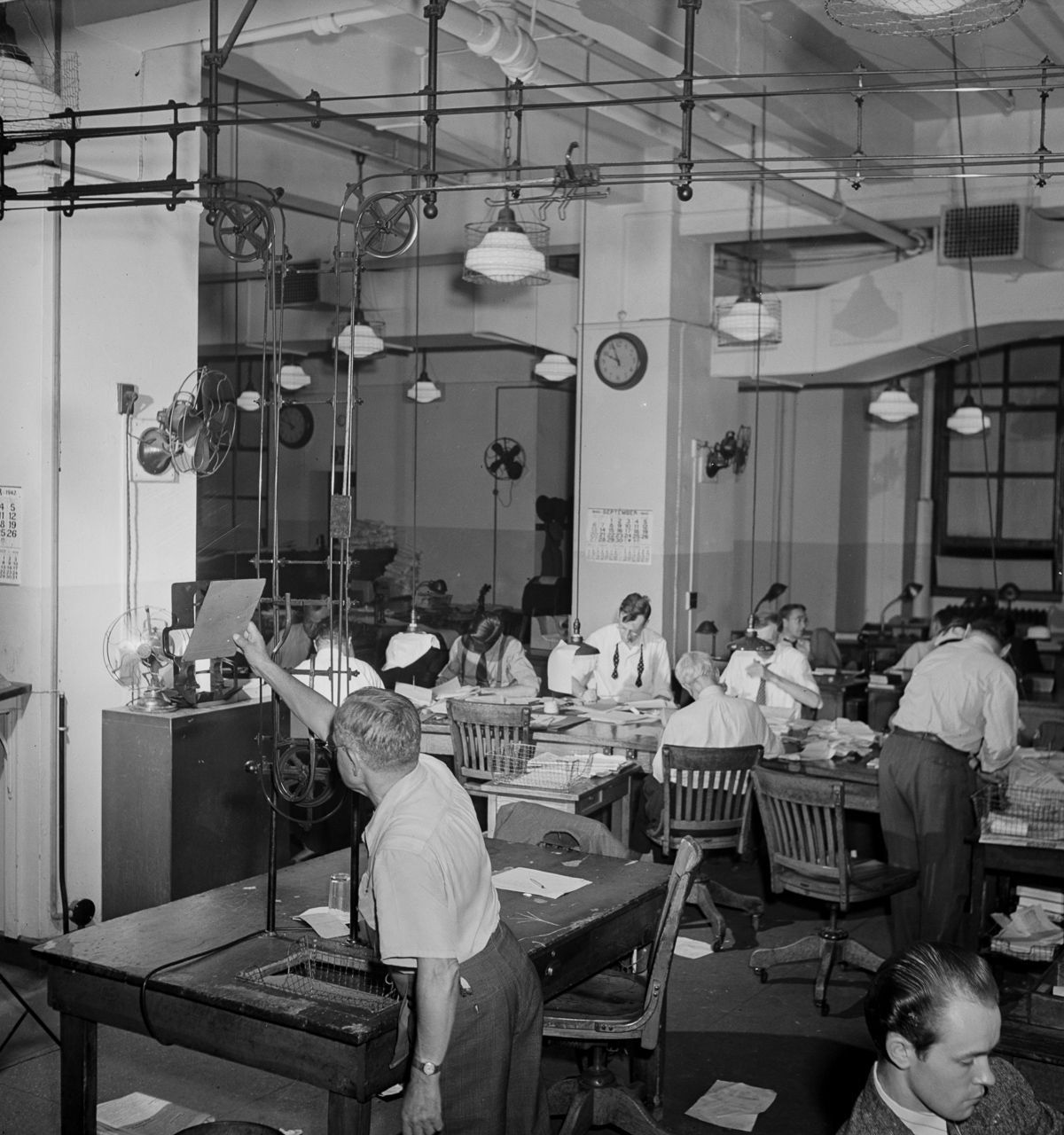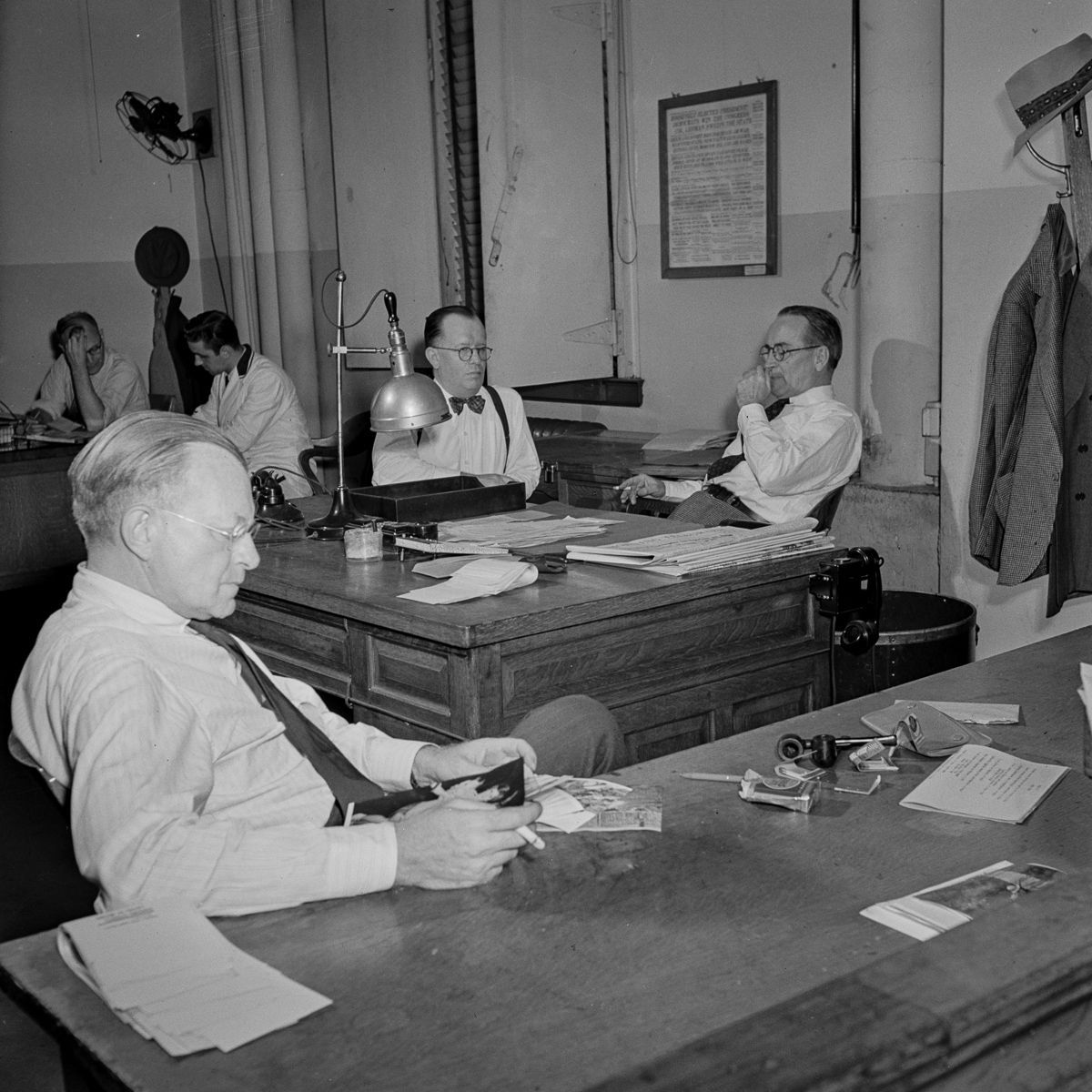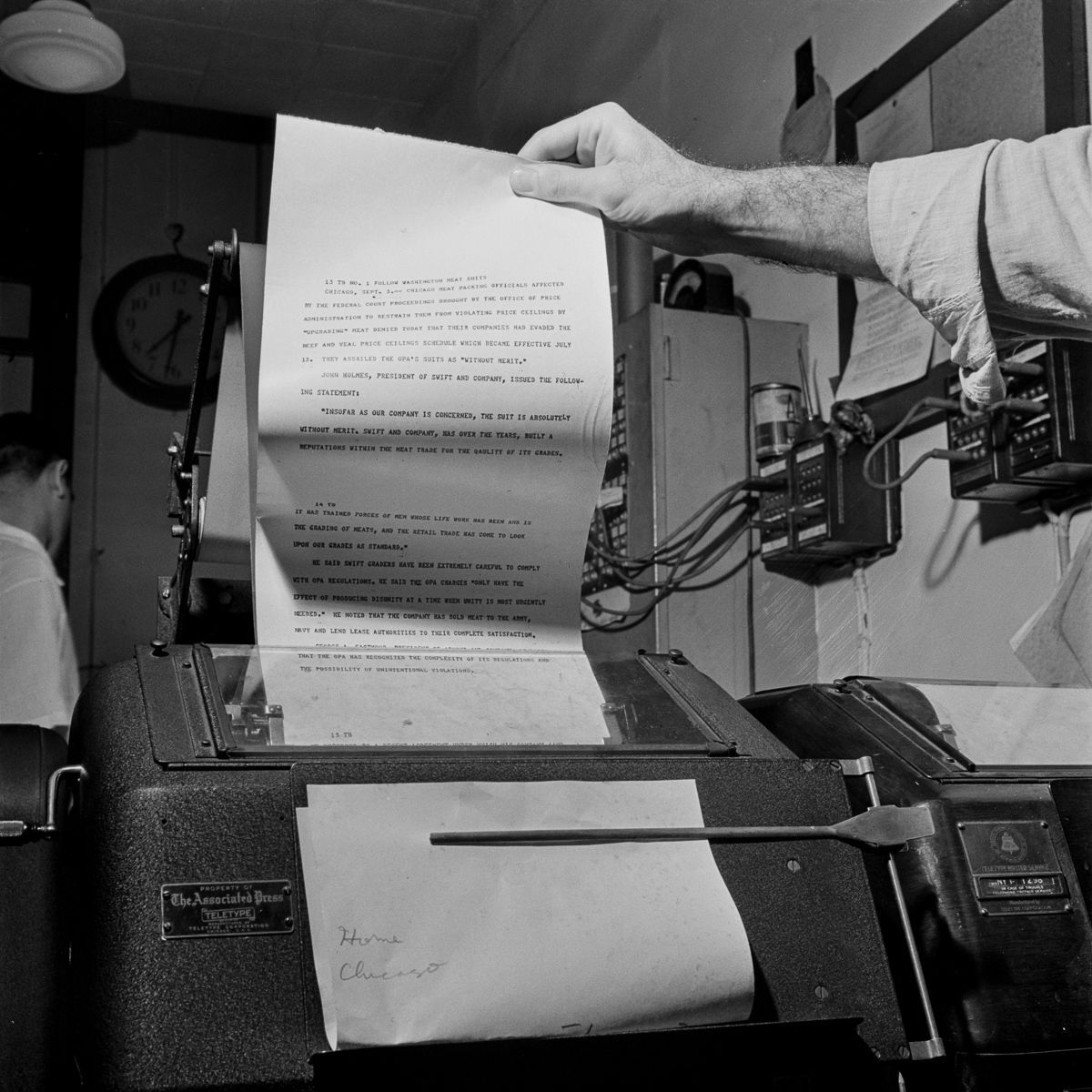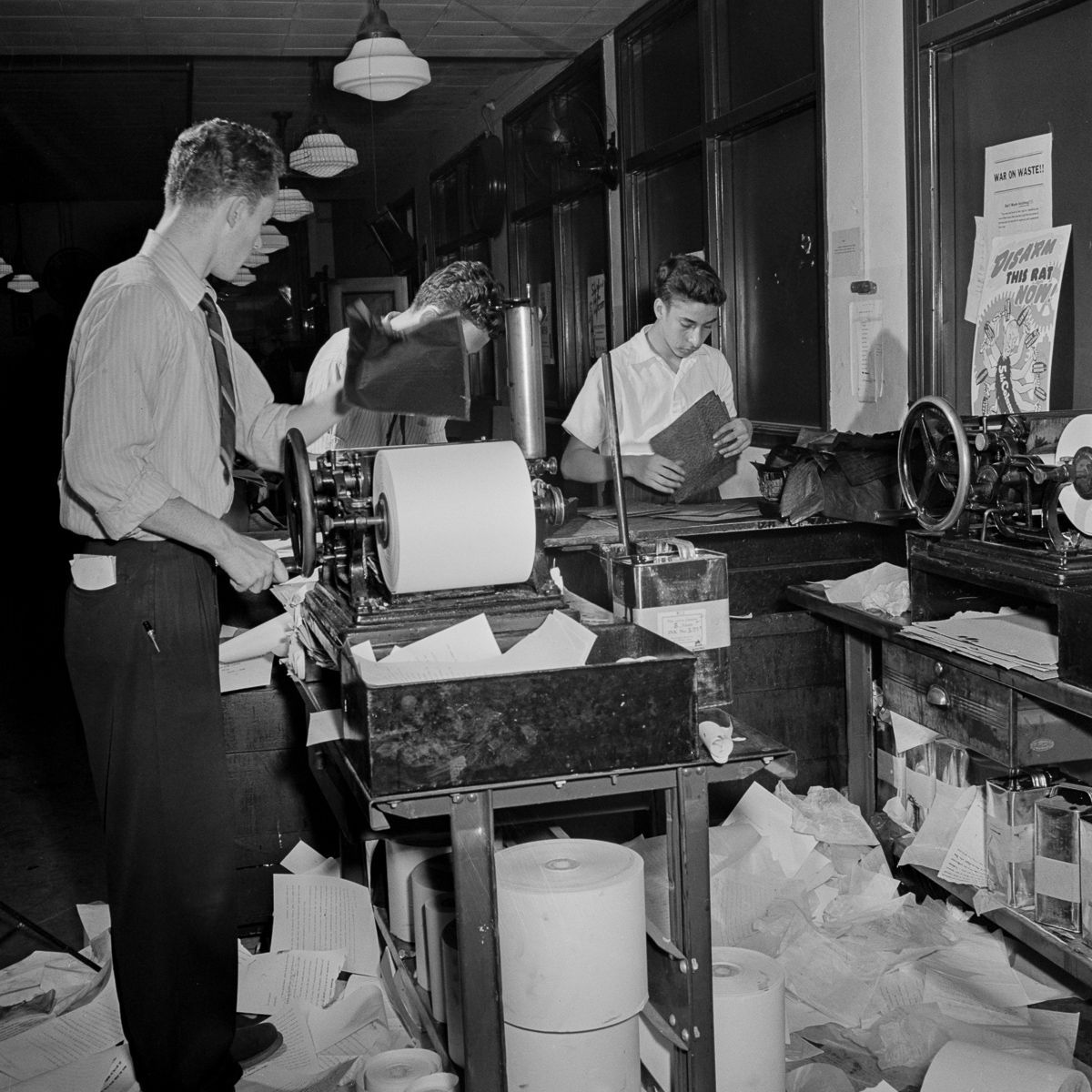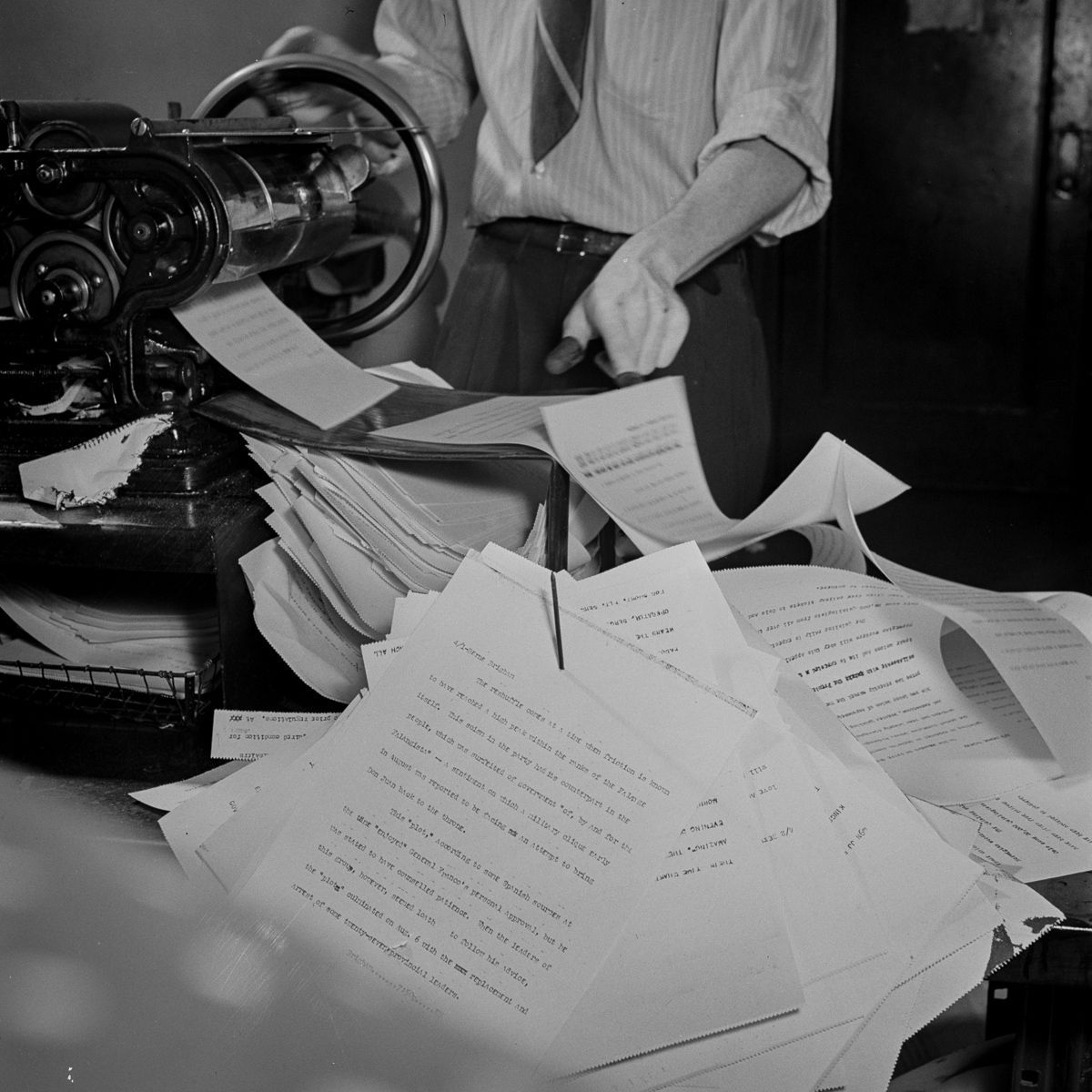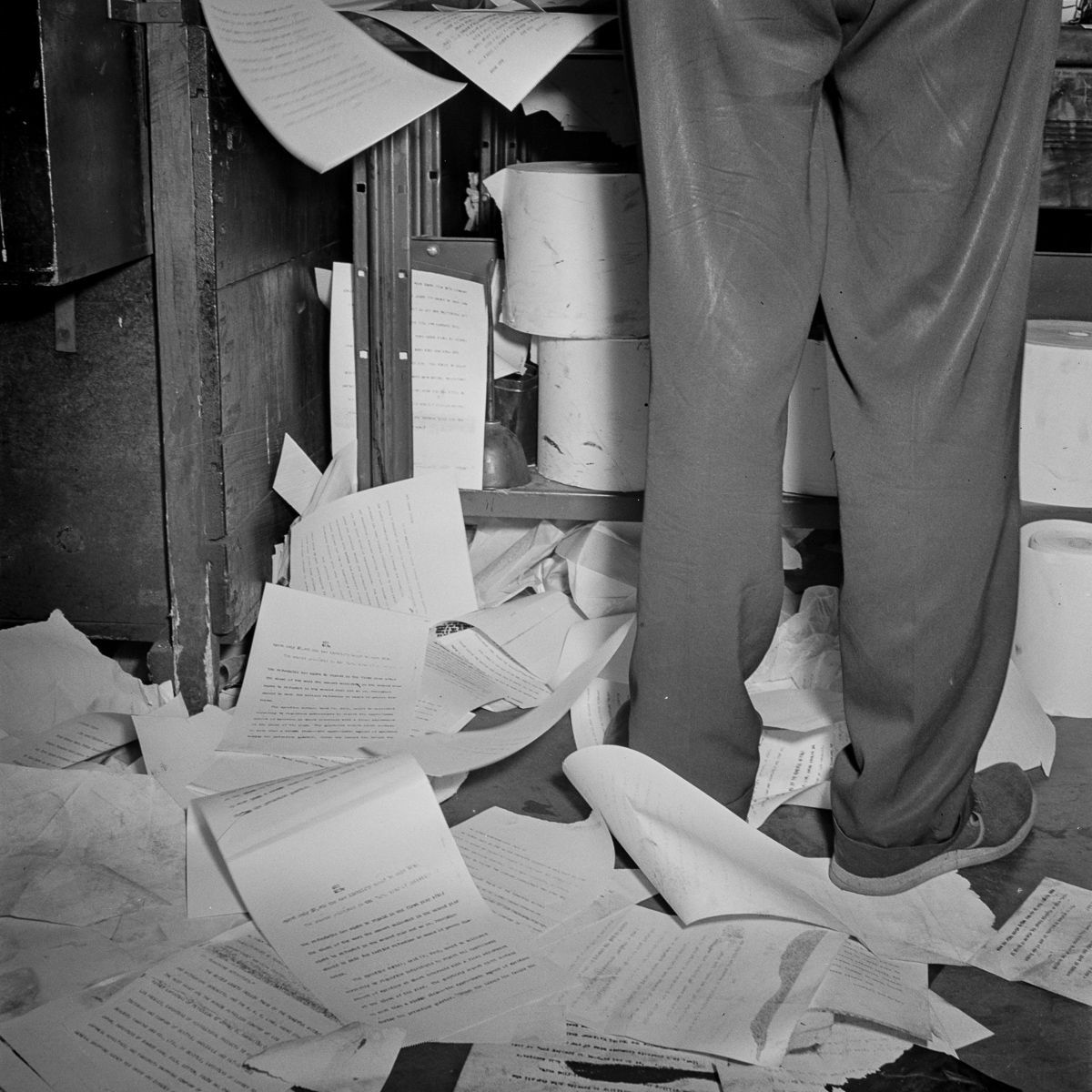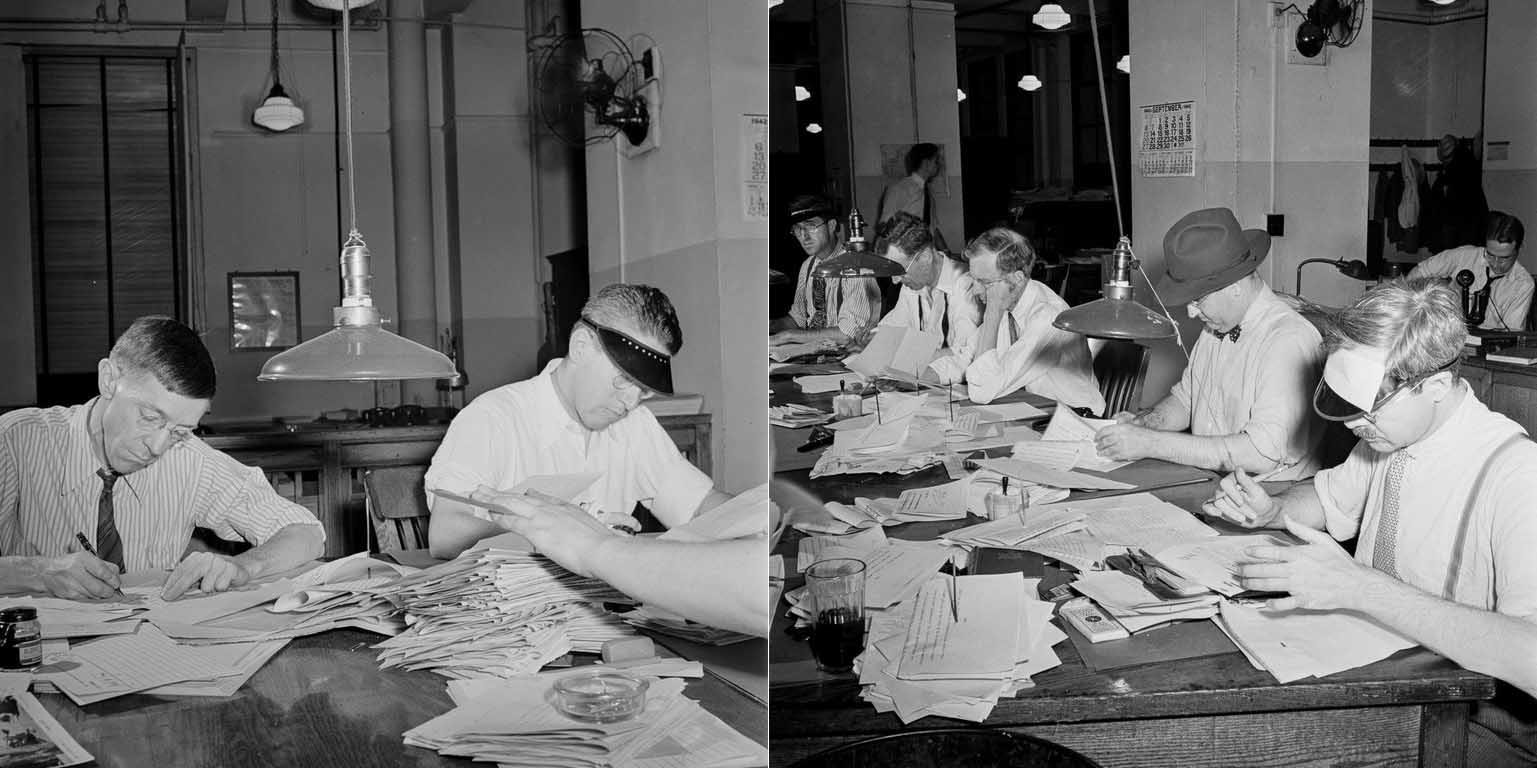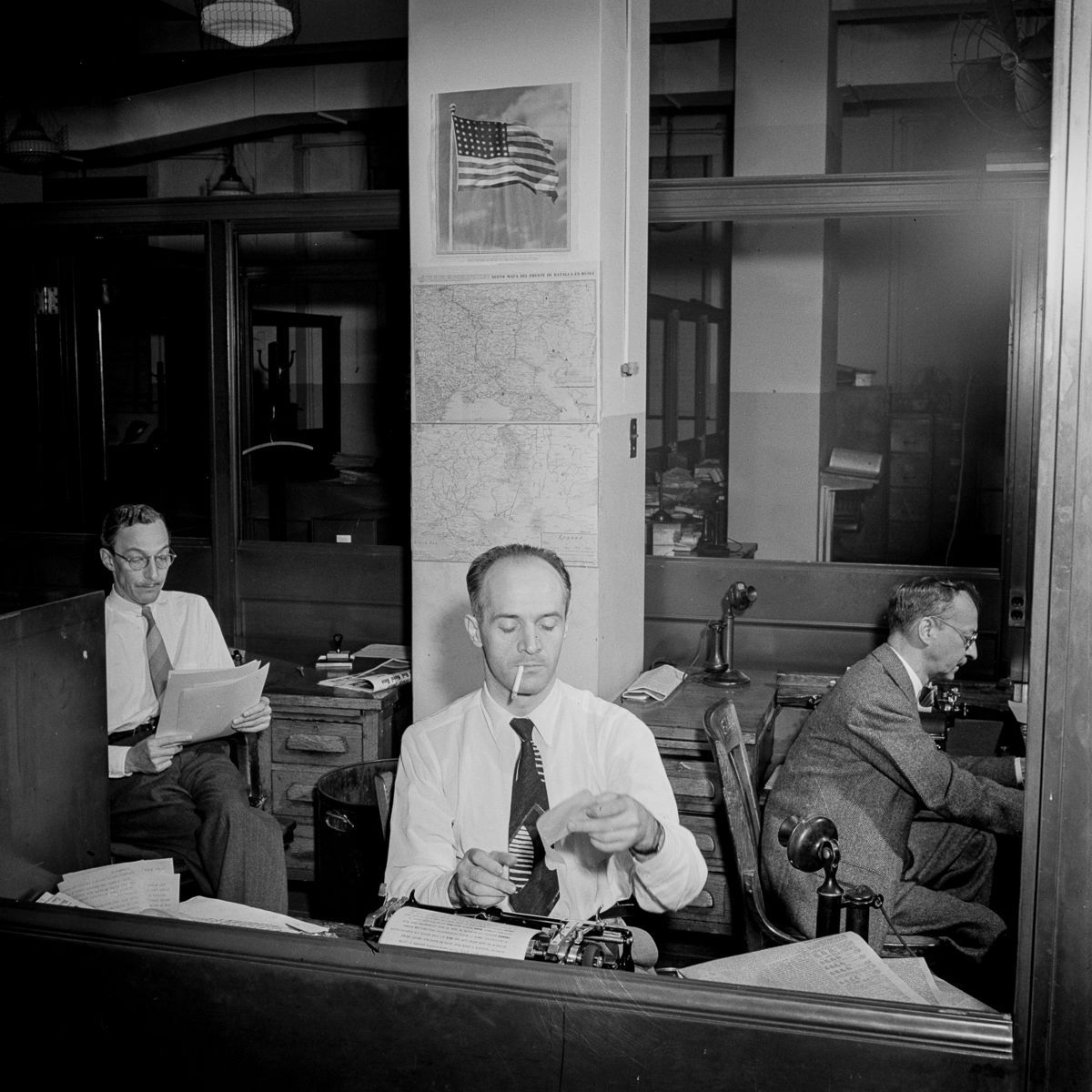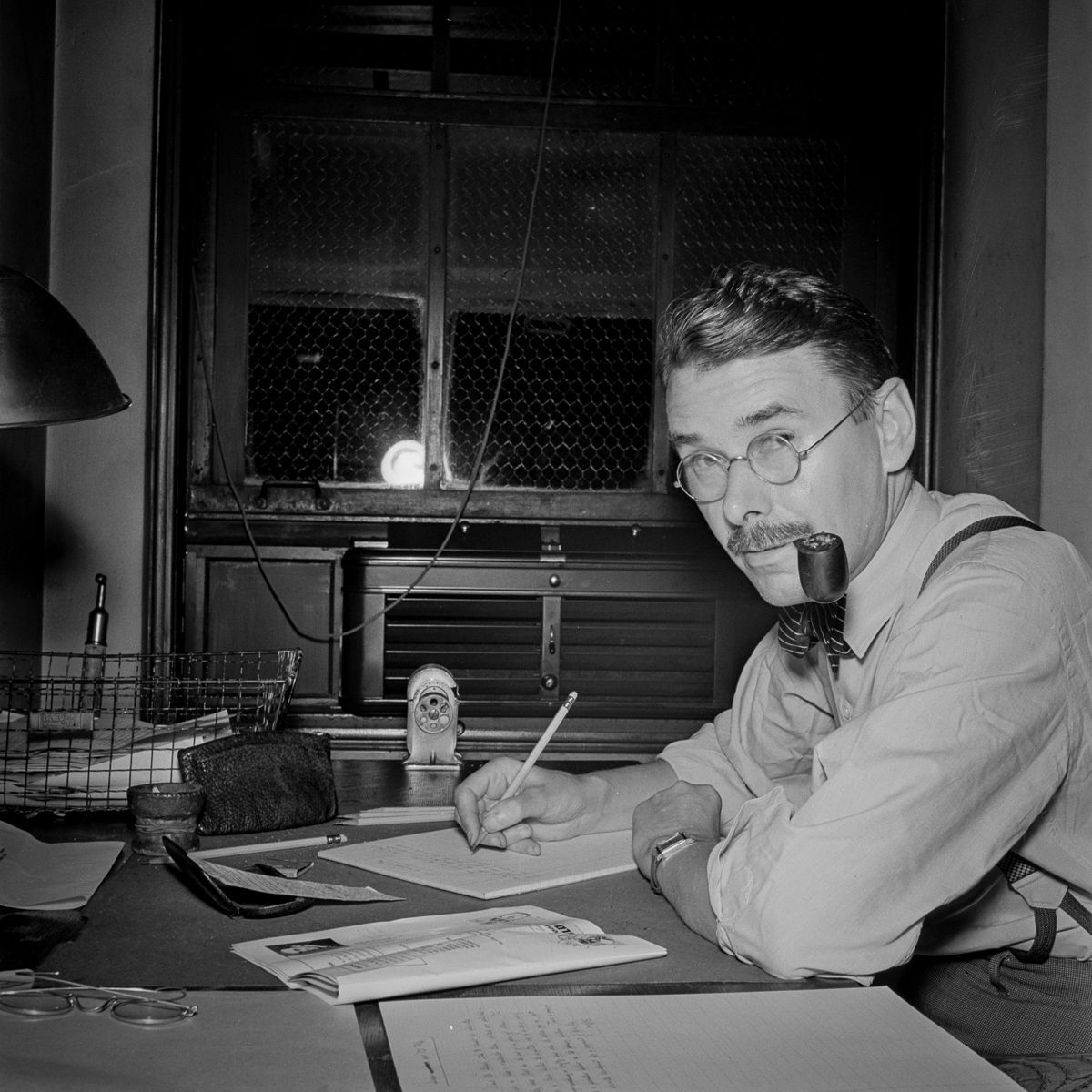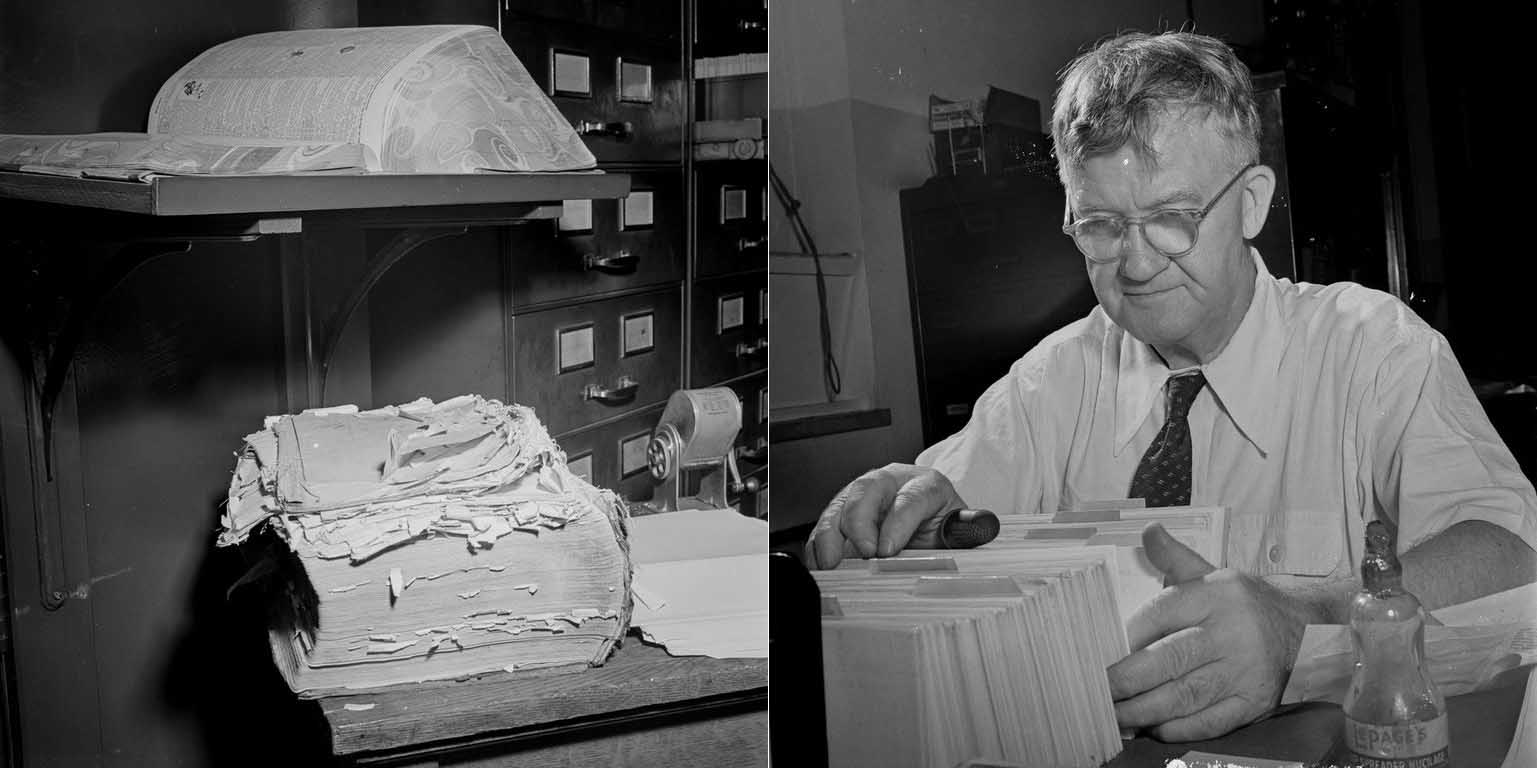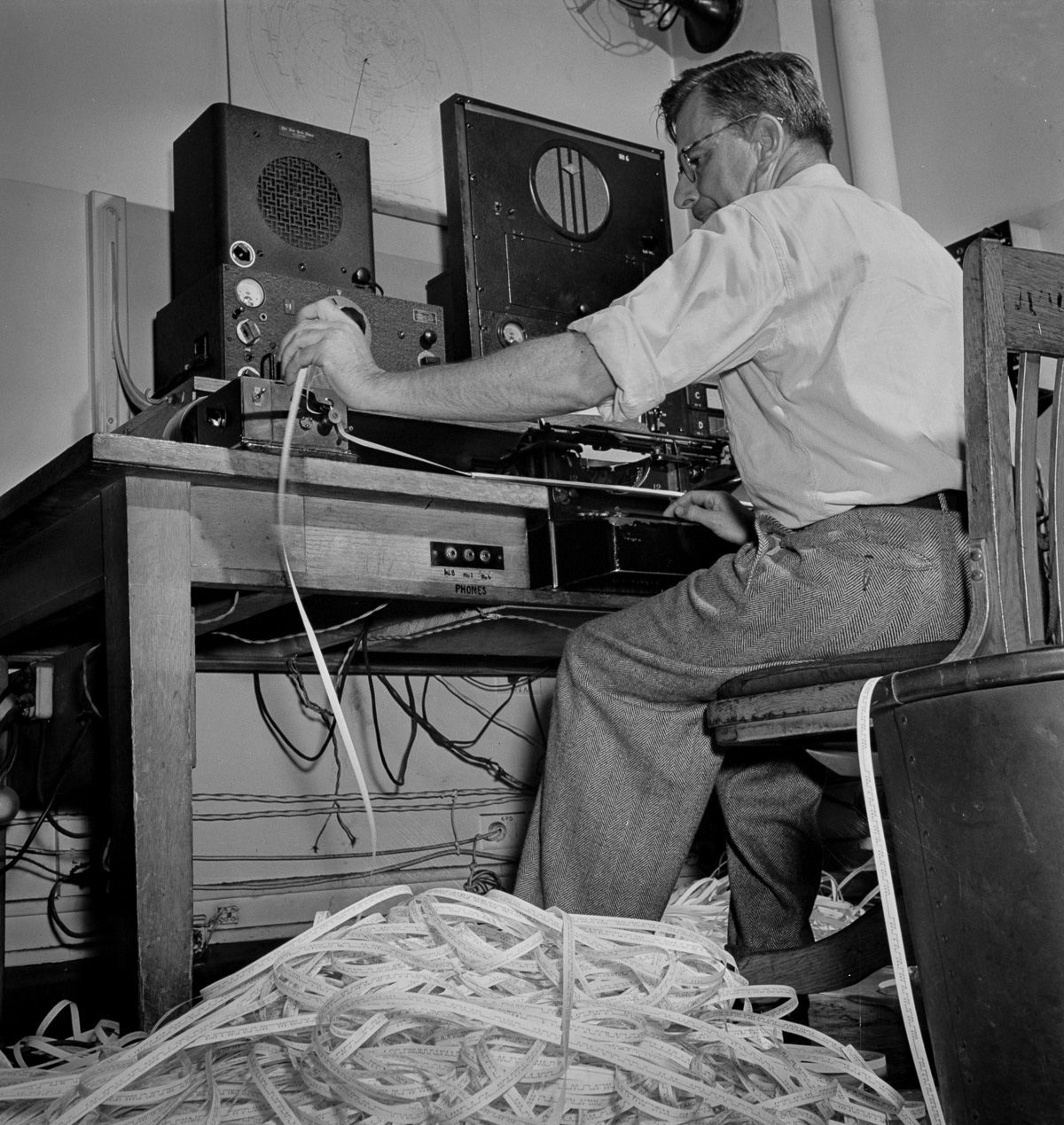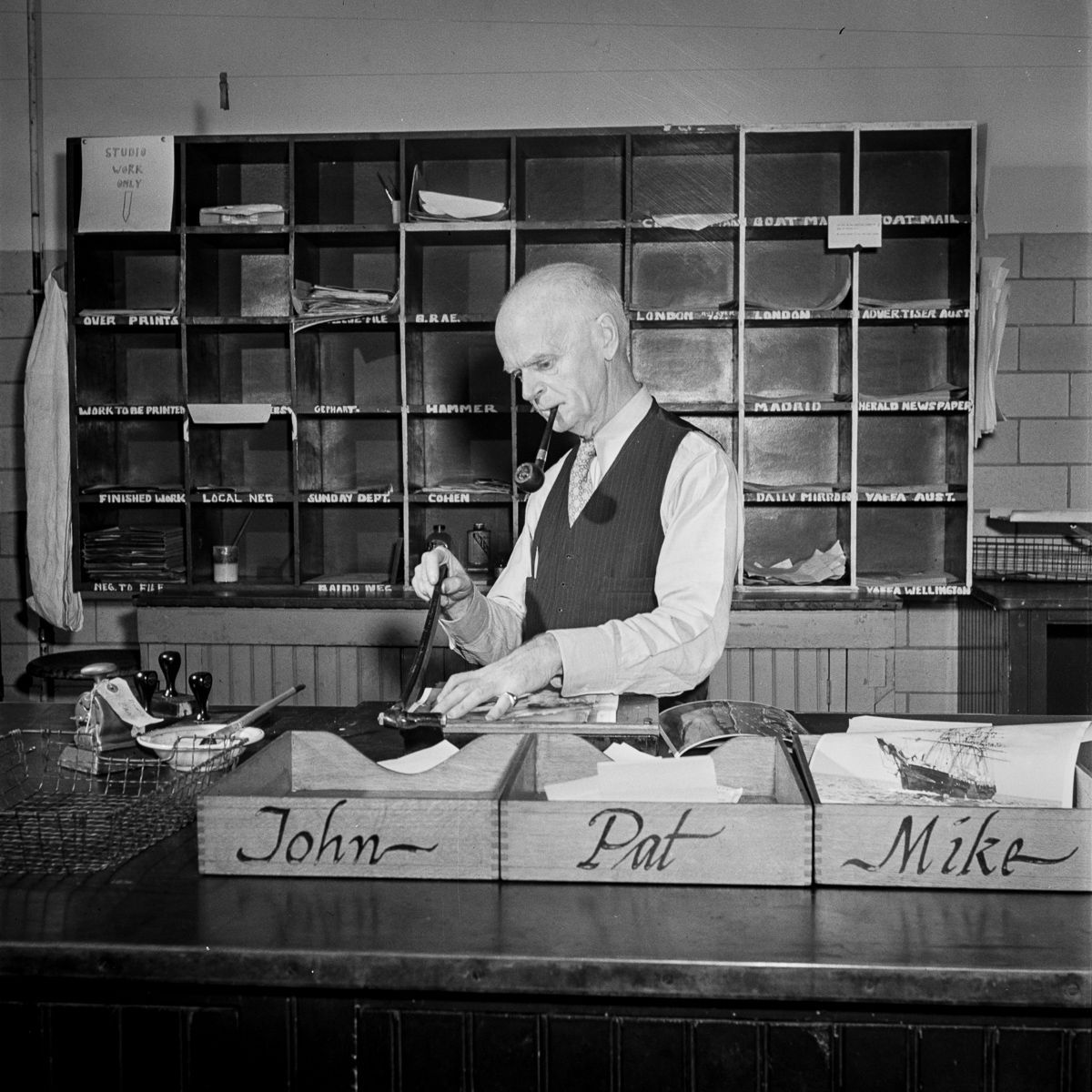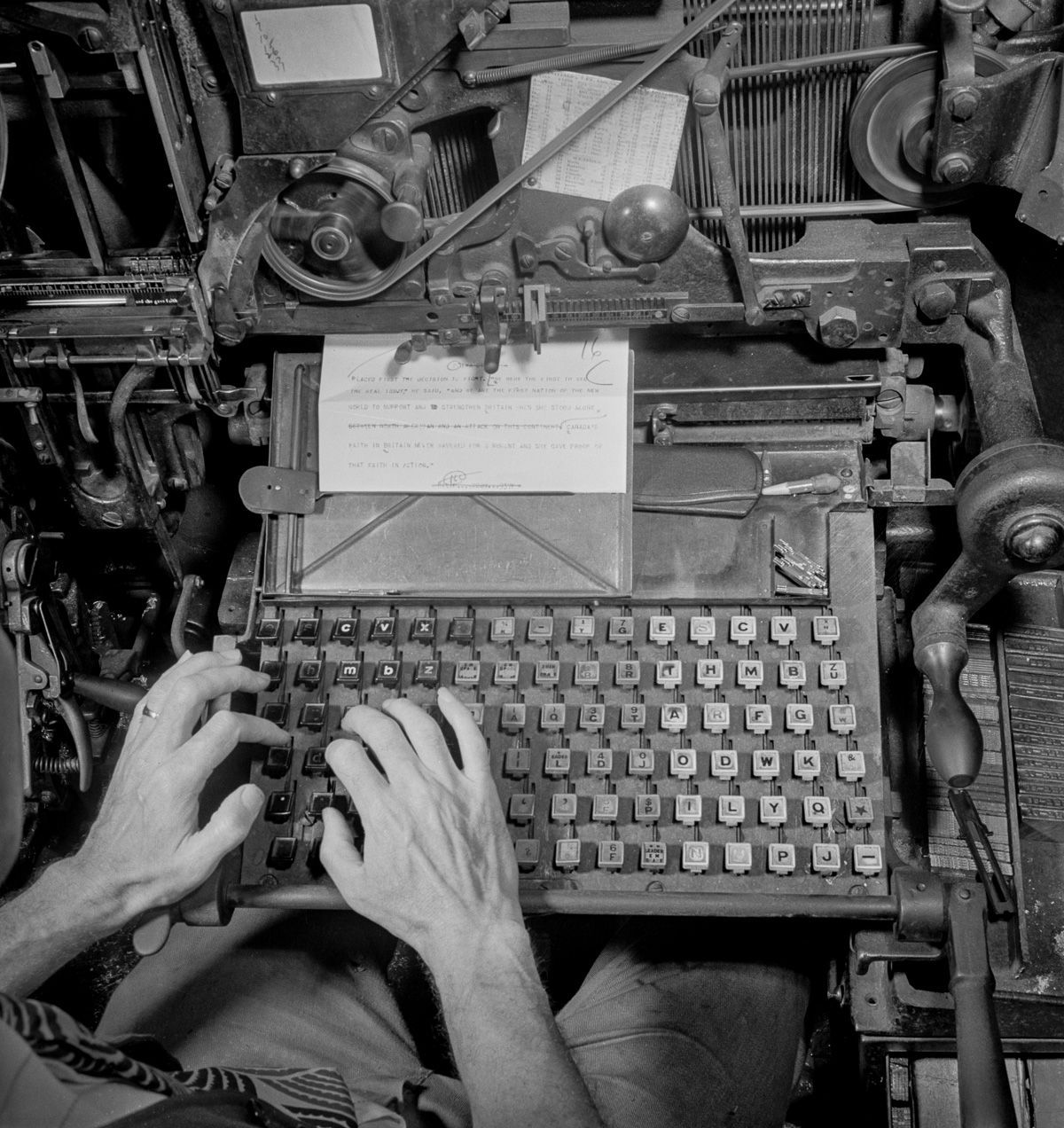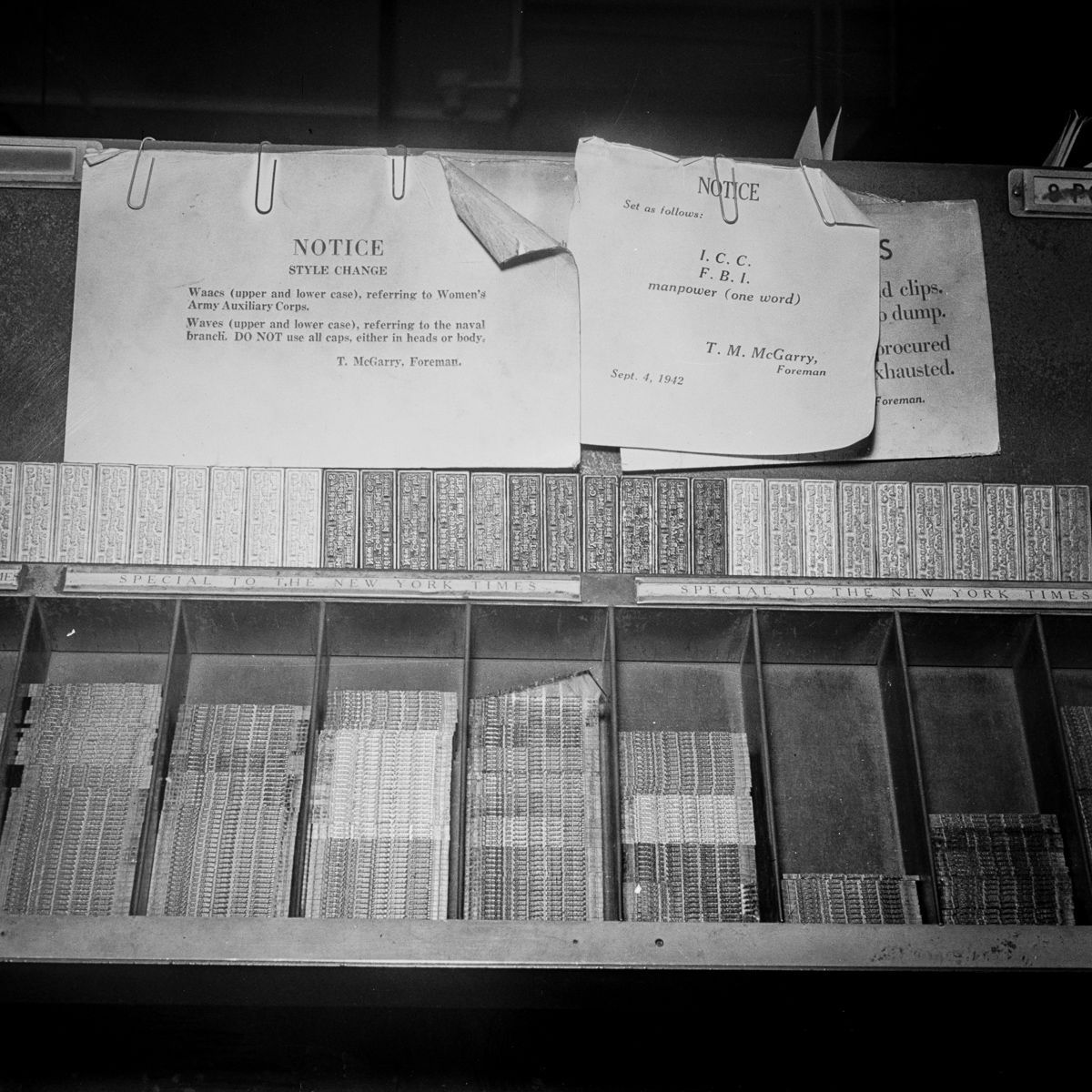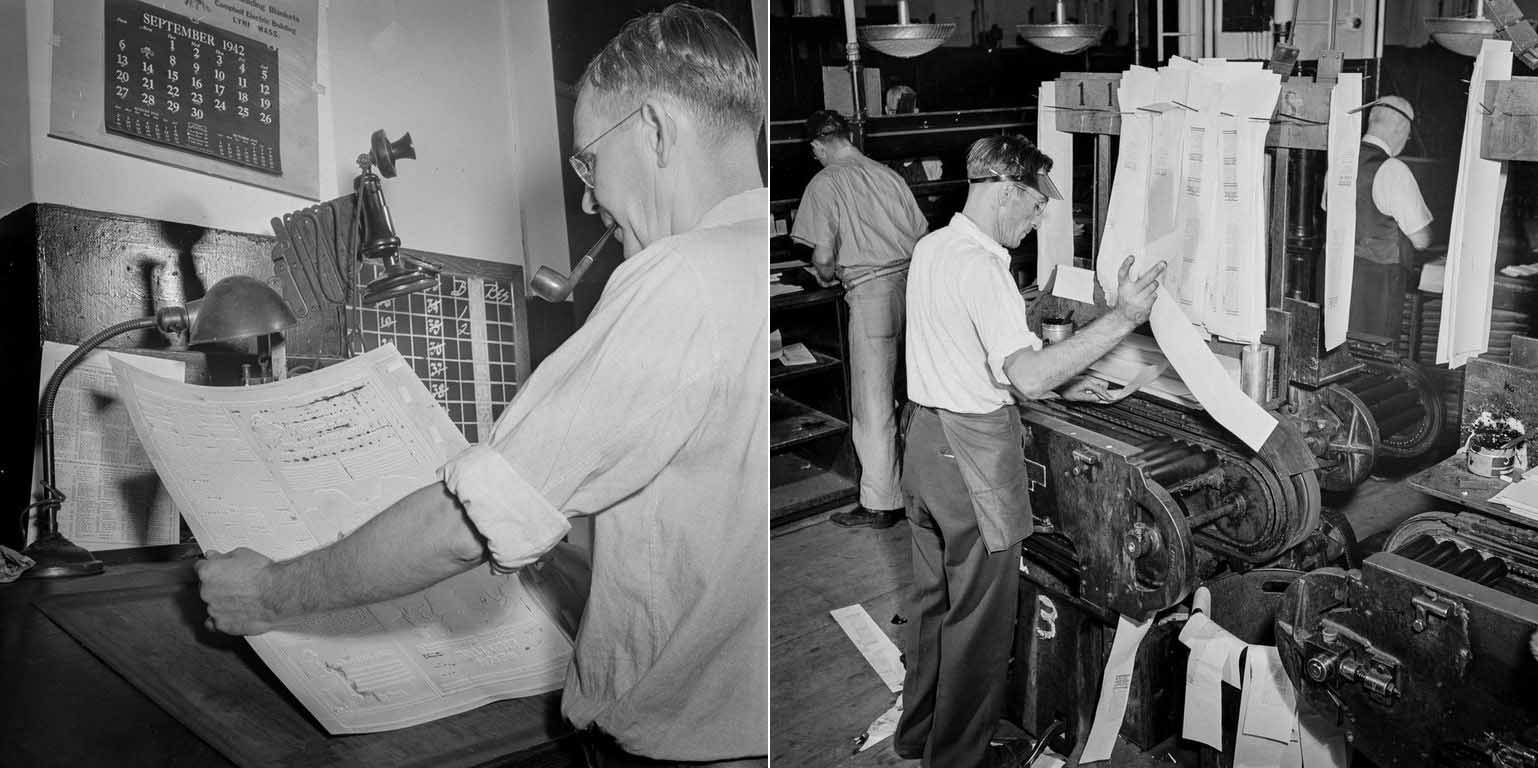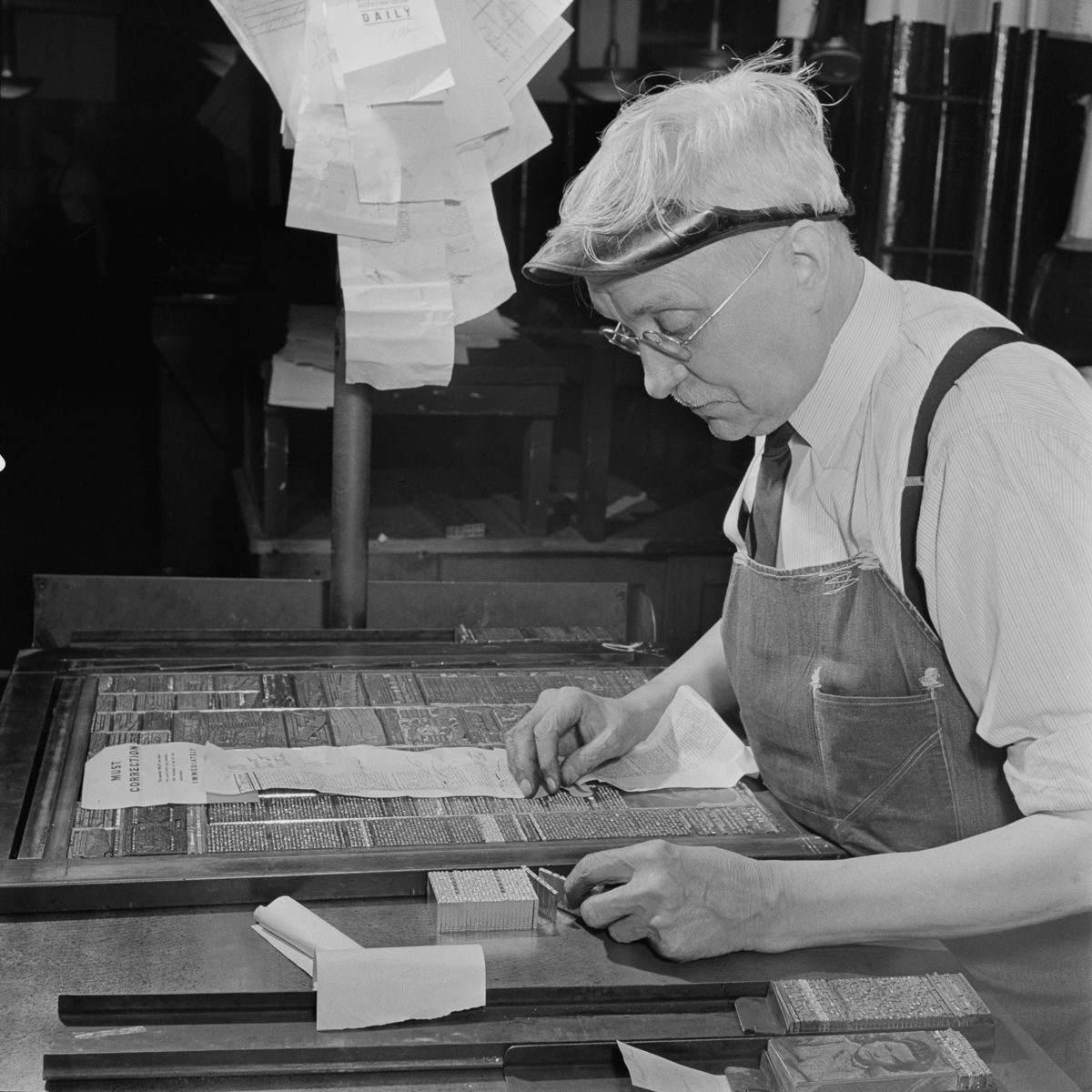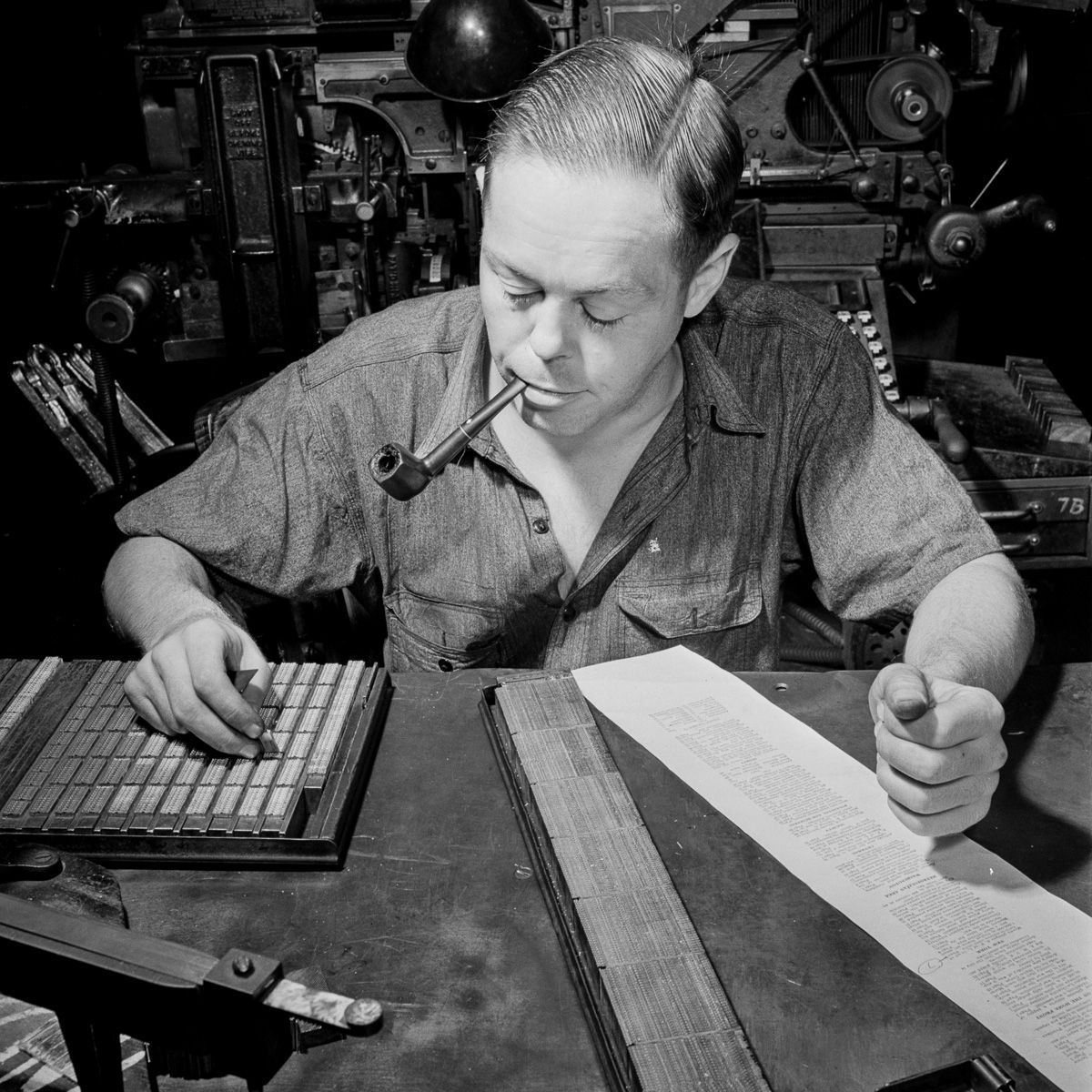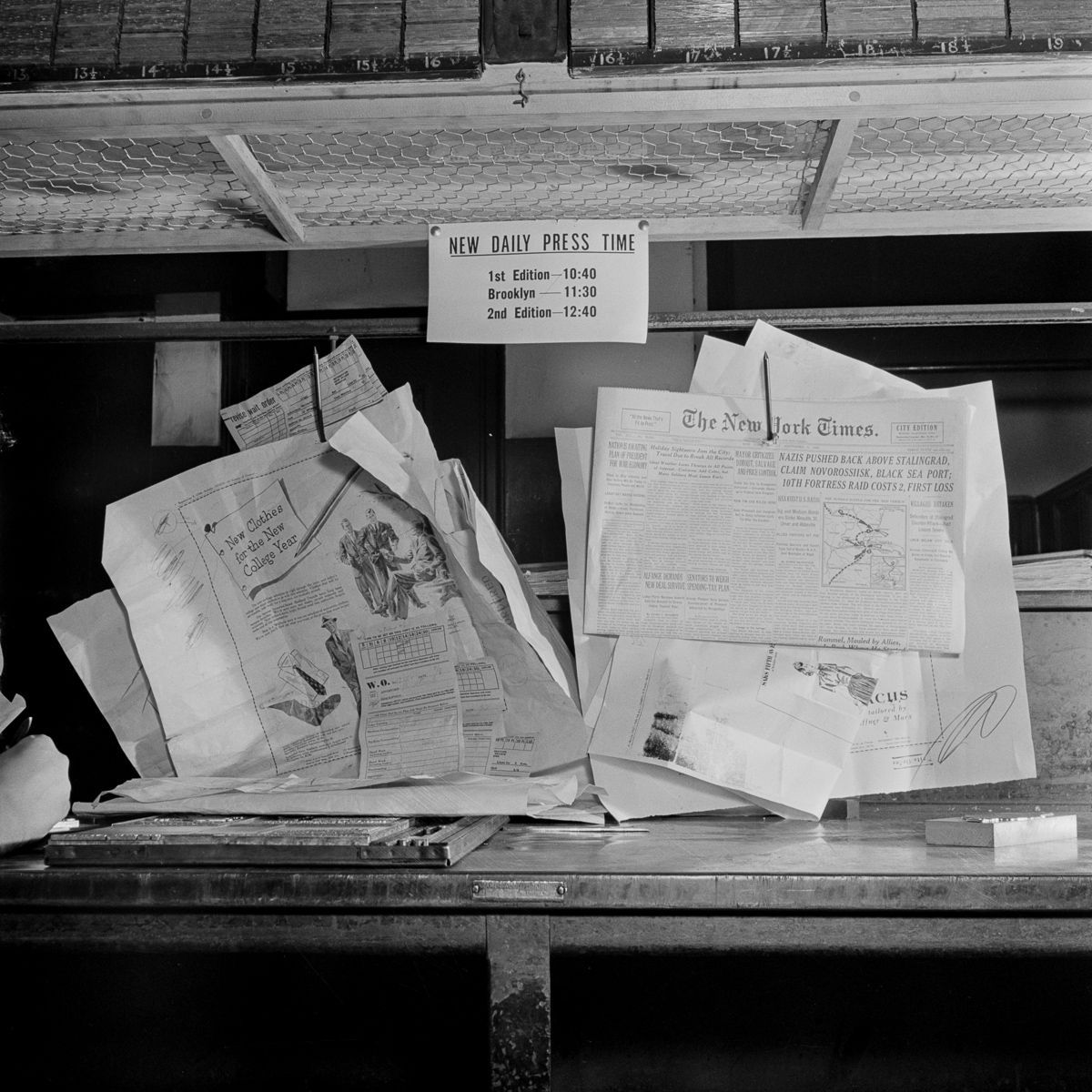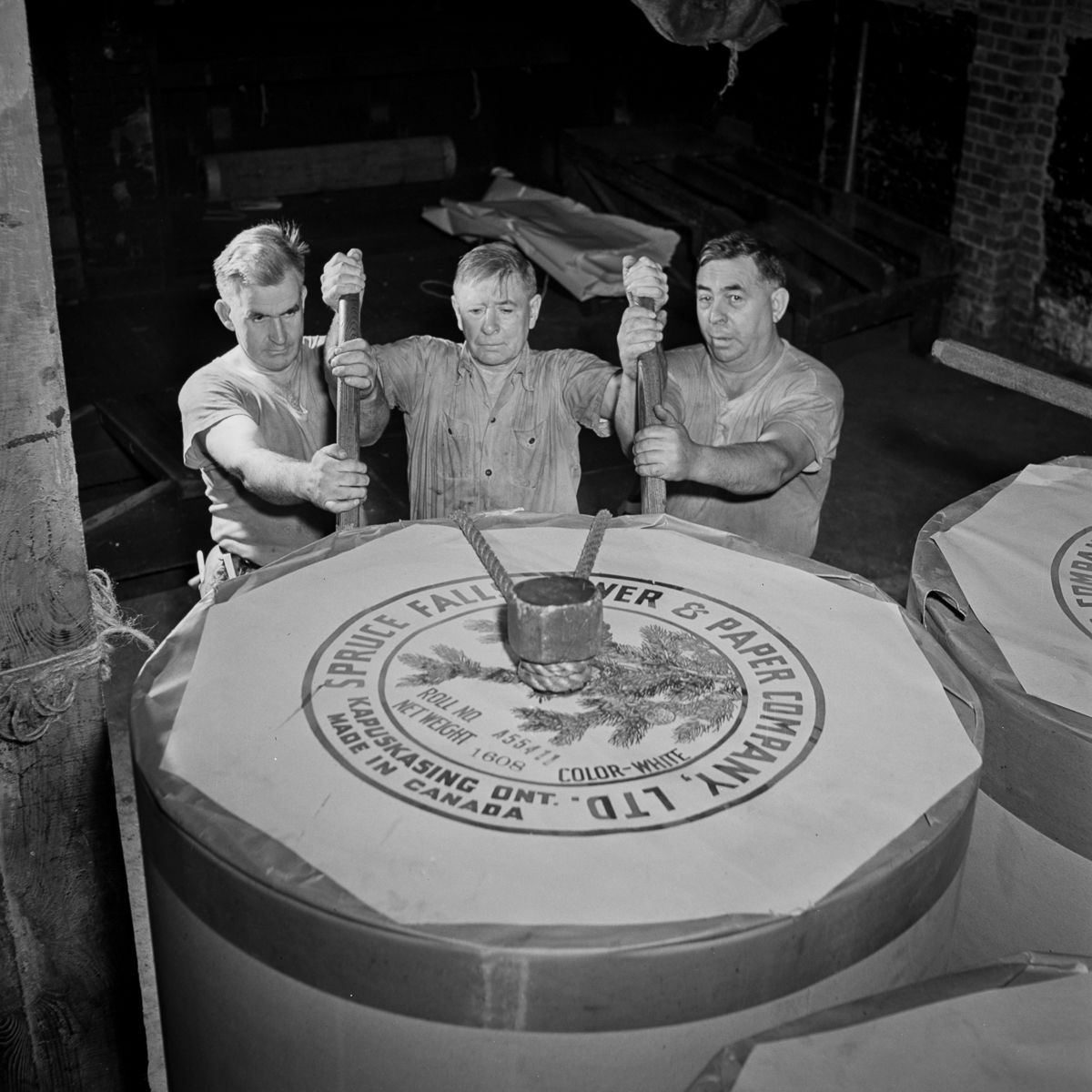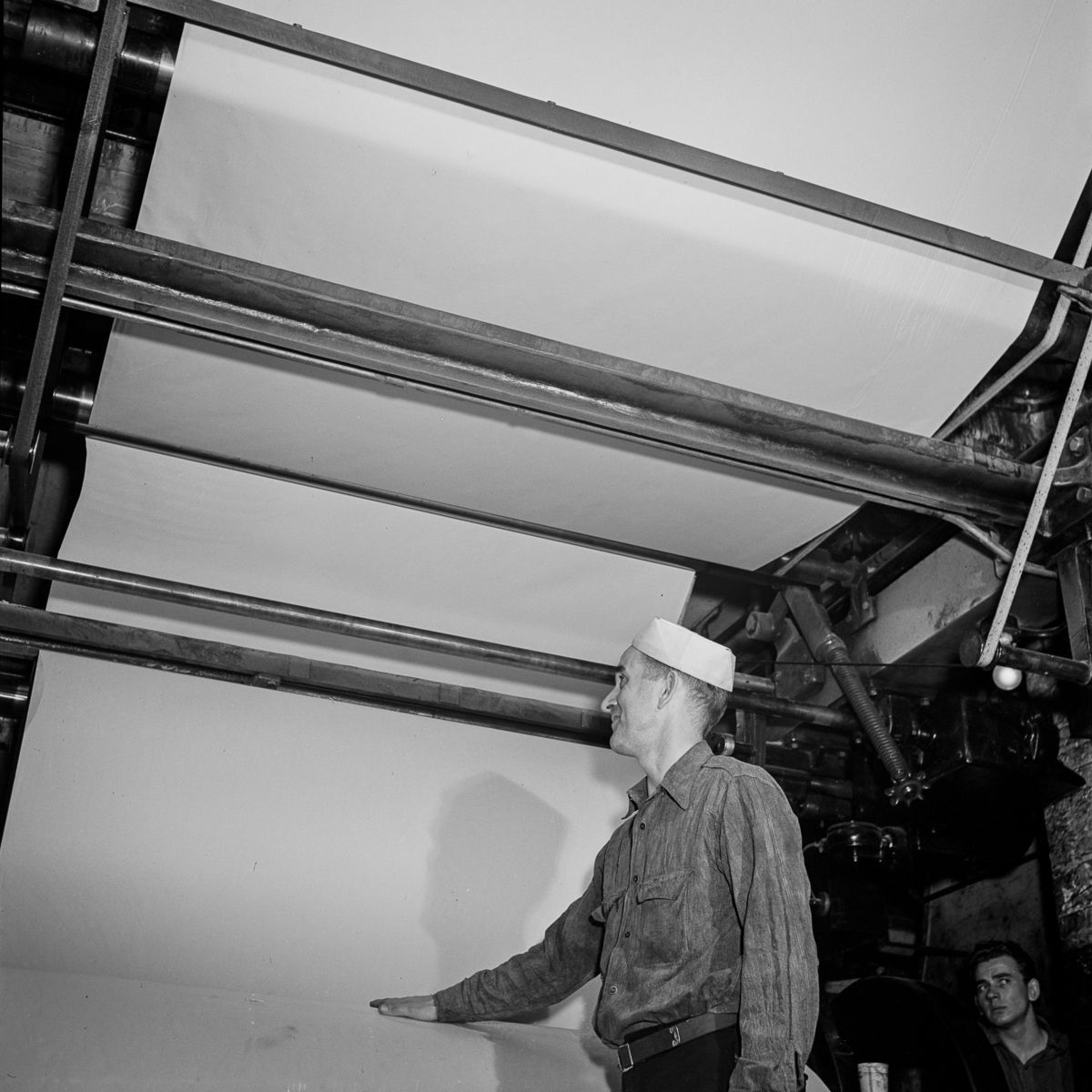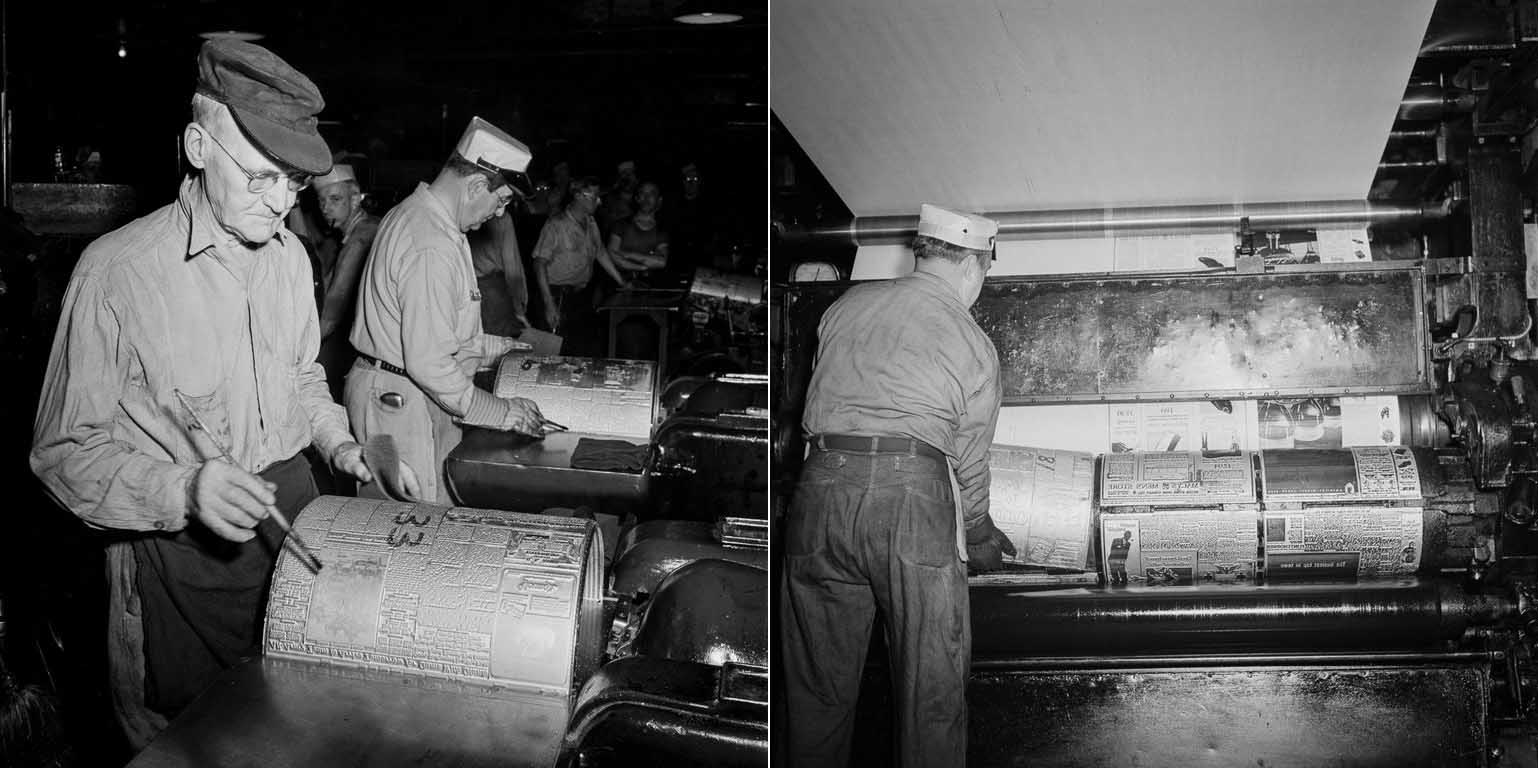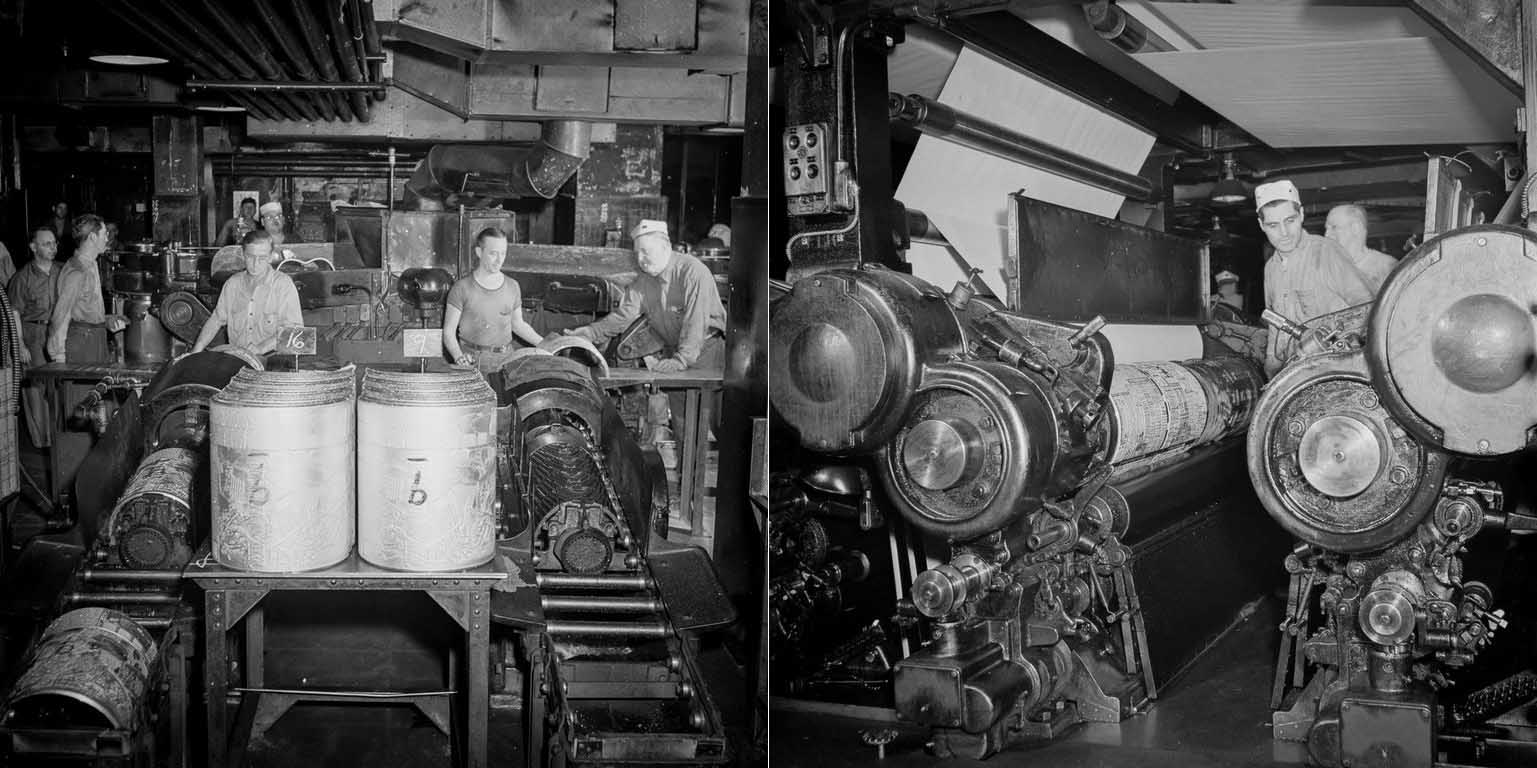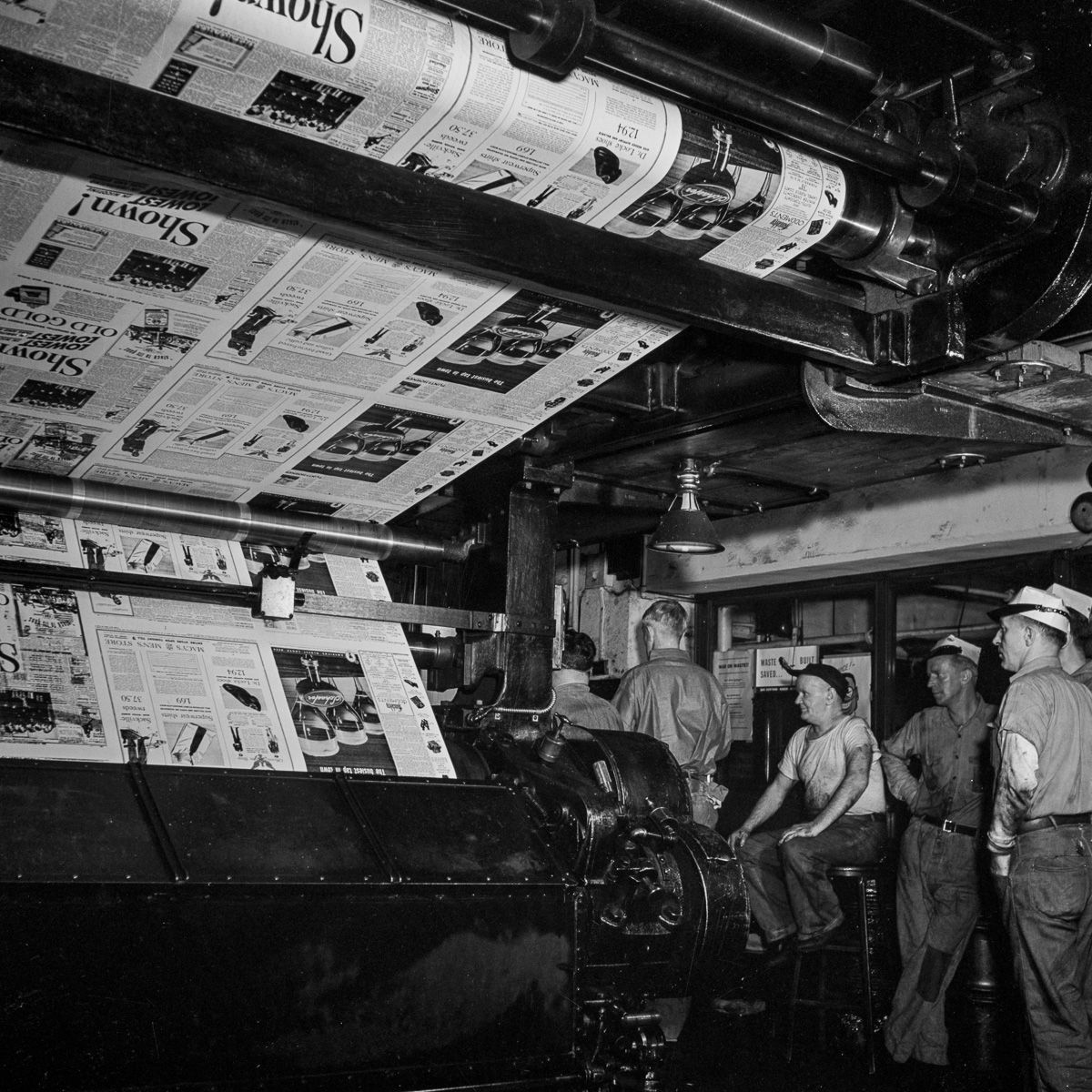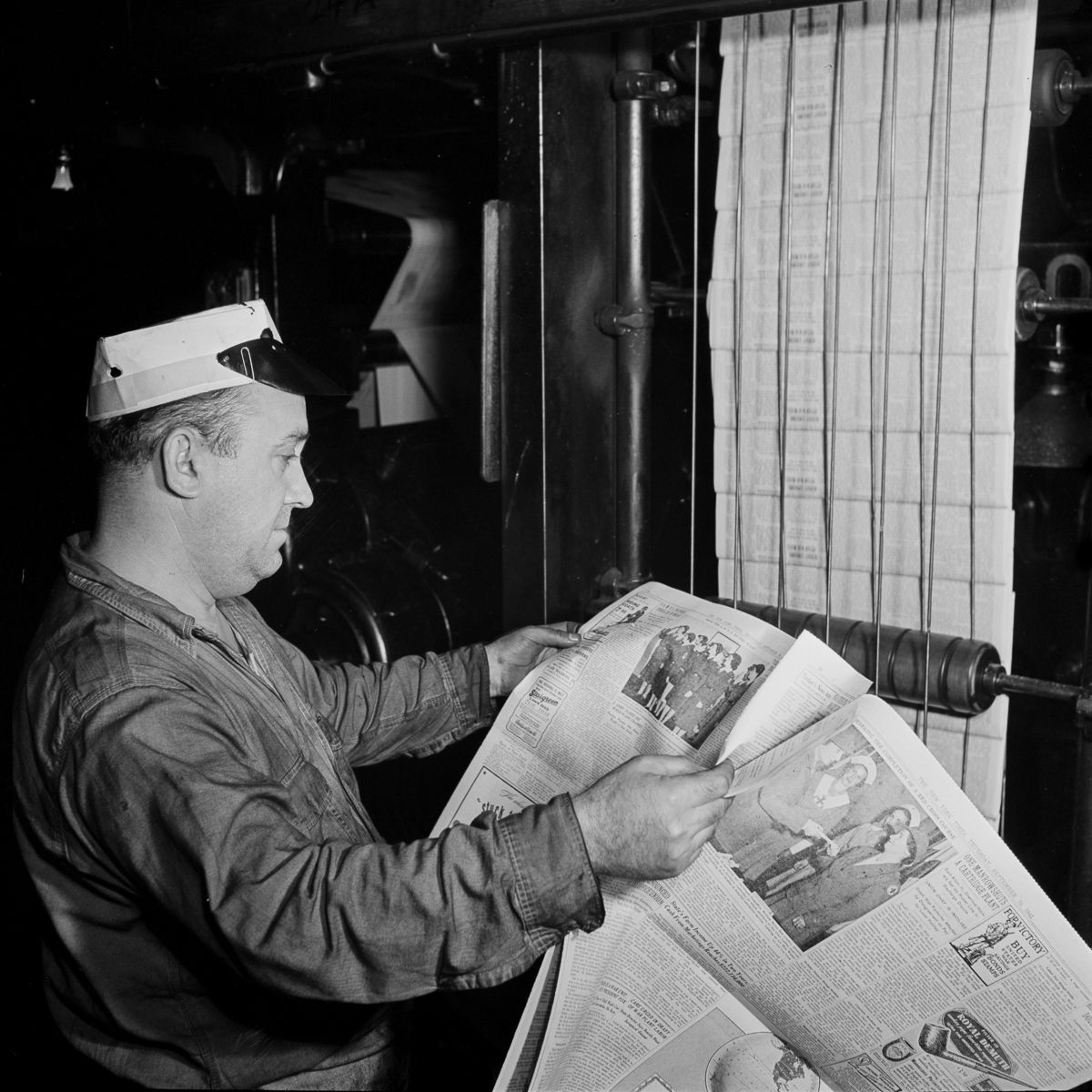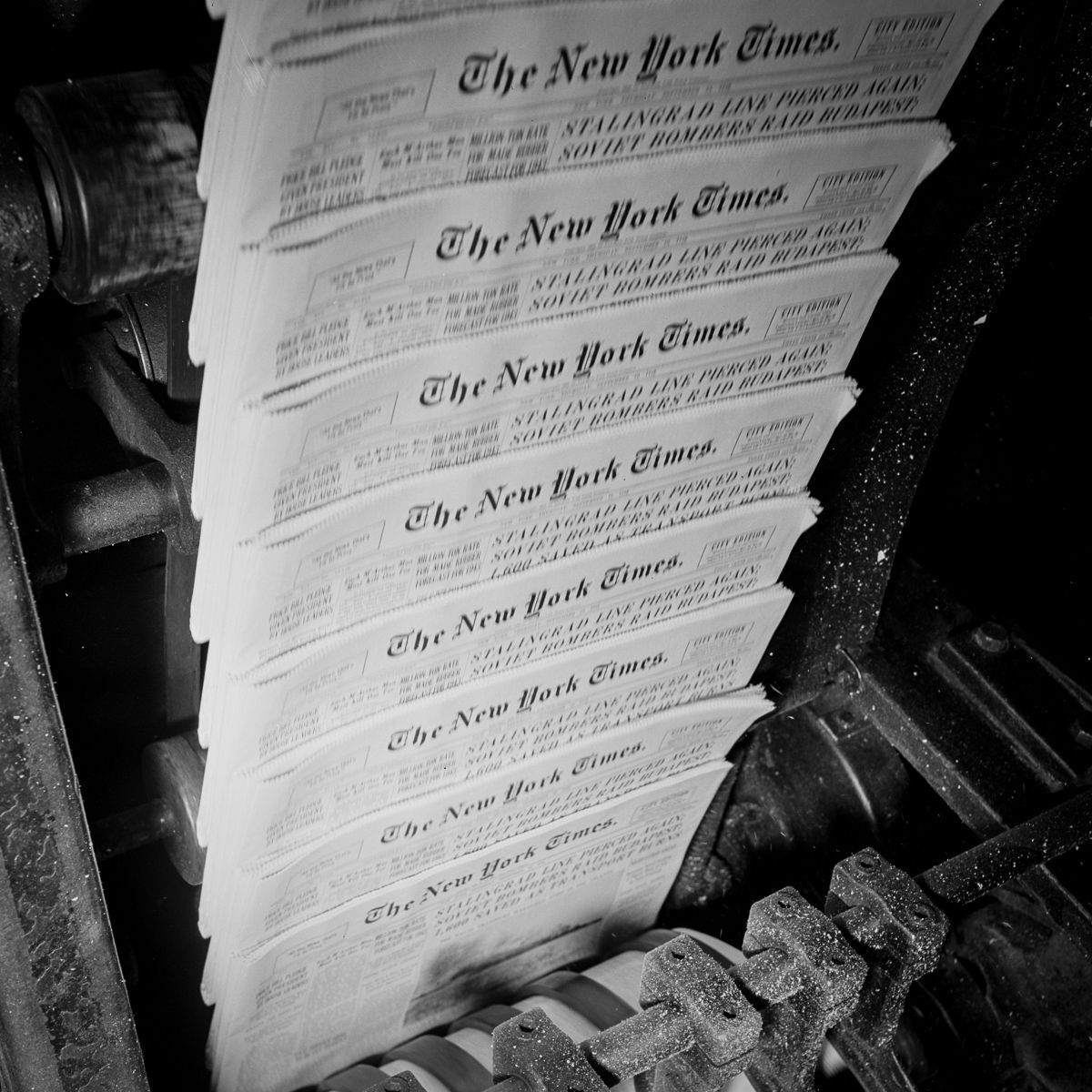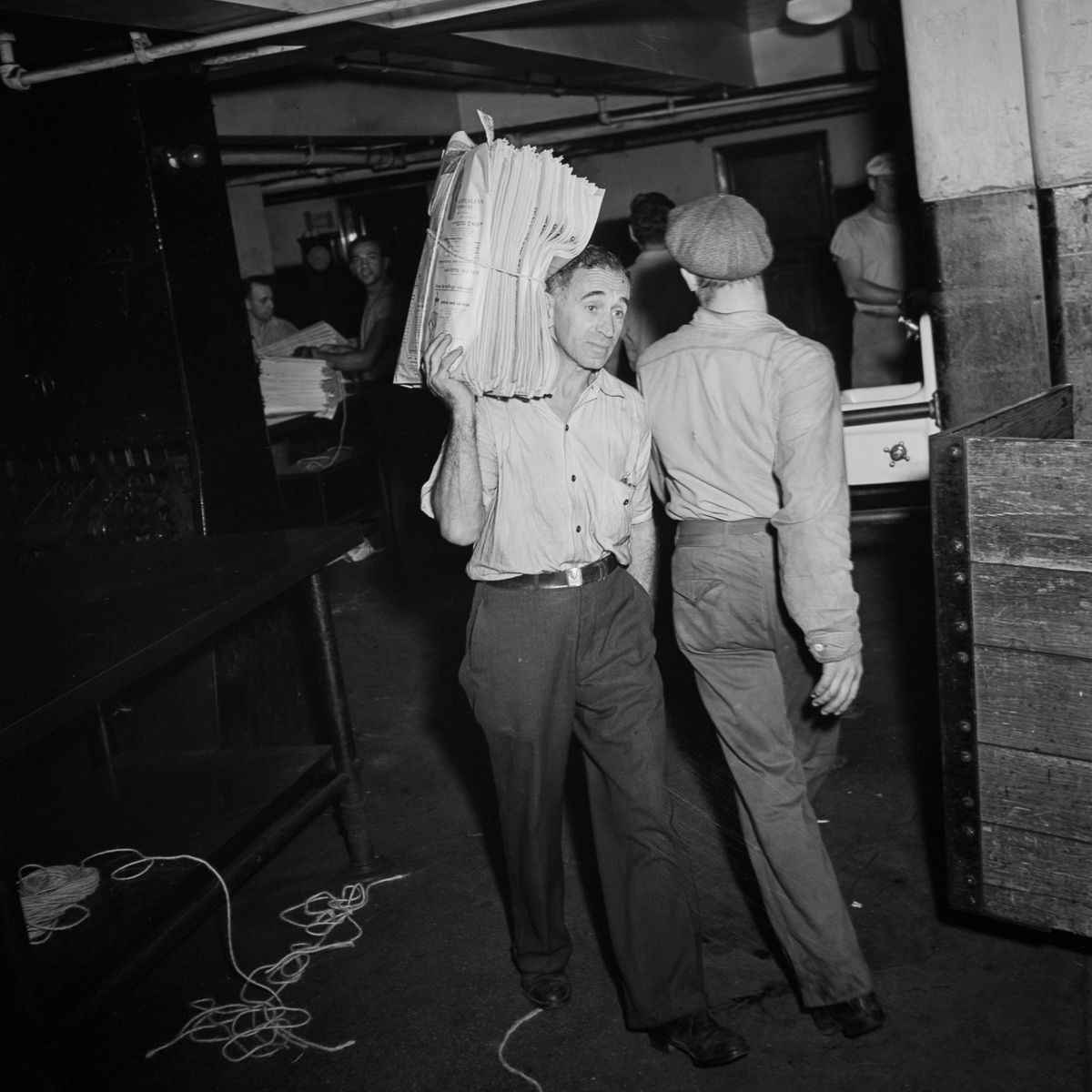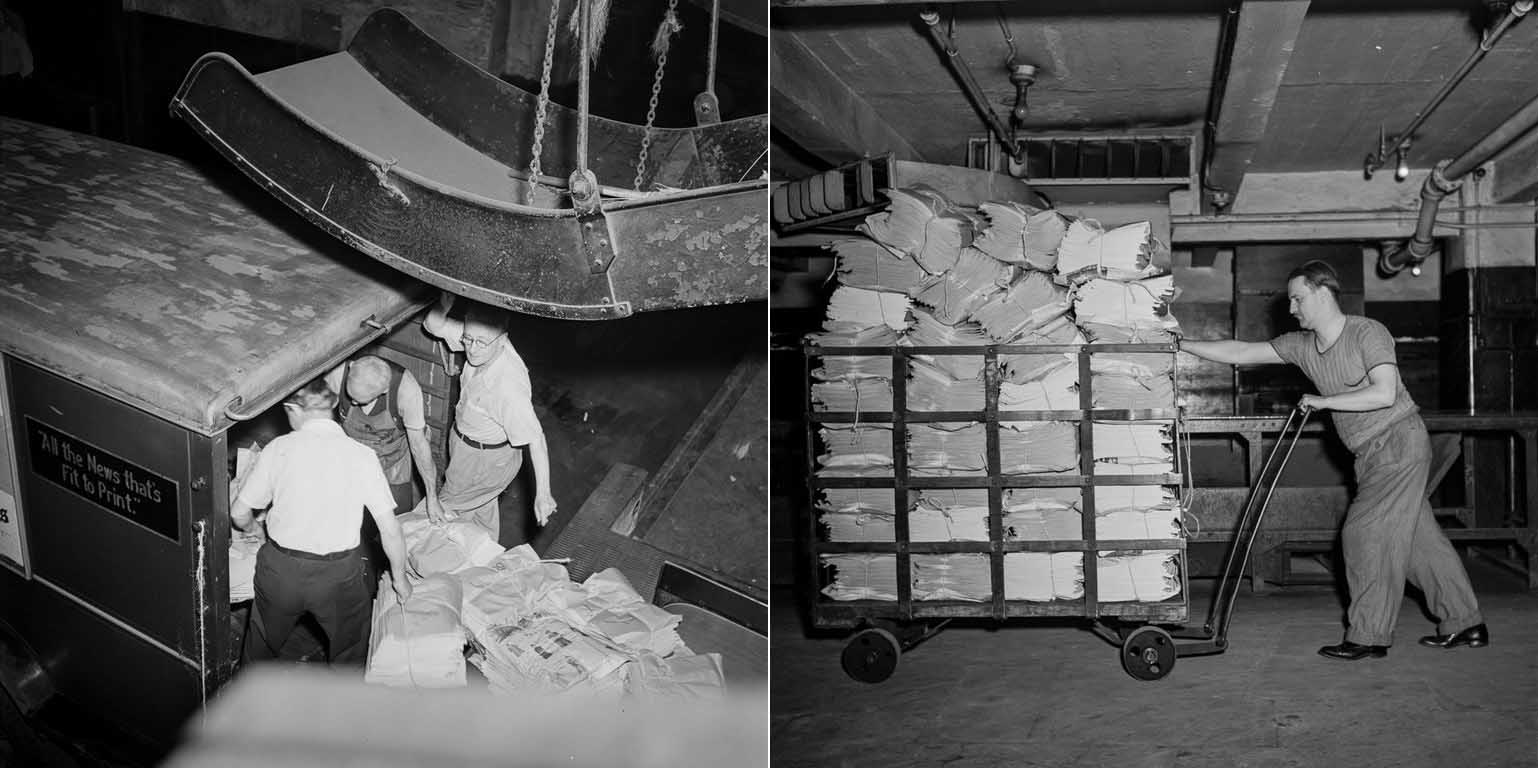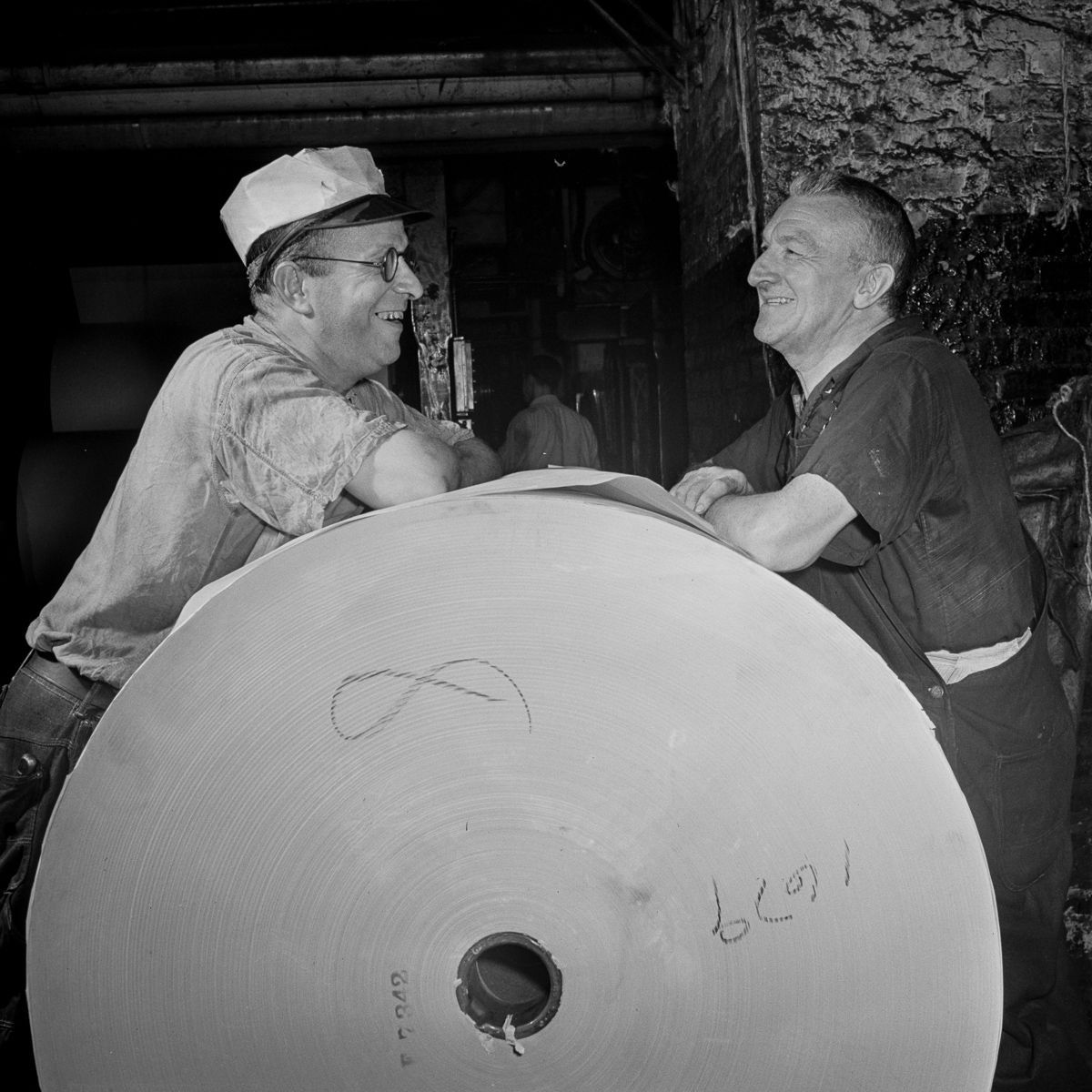In September 1942, Office of War Information photographer Marjory Collins paid a visit to the offices of the New York Times, located at the iconic One Times Square and an annex on 43rd Street. There, she documented each step of the messy, physical process as news coming in over the wires was sorted, edited, rewritten, laid out, and printed, all under an ever-approaching deadline. The Thursday, Sept. 10, 1942 issue was dominated by news of fighting in Europe and the Pacific, as well as rationing and cutbacks on the home front (along with recaps of a Yankees victory over the Browns and horse races at the Aqueduct Racetrack). “Hot type” is shorthand for the widely used hot metal typesetting method invented in the 19th century. Typesetters created lines of text using brass letters, then injected molten lead into the mold. The resulting plates were used to print books and newspapers. Afterward, the lead was tossed back into a “hellbox,” melted down again, and reused. This technology had several advantages: it reduced labor since type sorts did not need to be slotted into position manually, and cast crisp new type for each printing job. In the case of Linotype machines, each line was cast as a robust continuous block (hence “line o’type”) which was useful for rapid newspaper printing. It was the standard technology used for mass-market printing from the late nineteenth century, finally declining with the arrival of phototypesetting and then electronic processes in the 1950s to 1980s. (Photo credit: Library of Congress). Notify me of new posts by email.
Δ Subscribe

